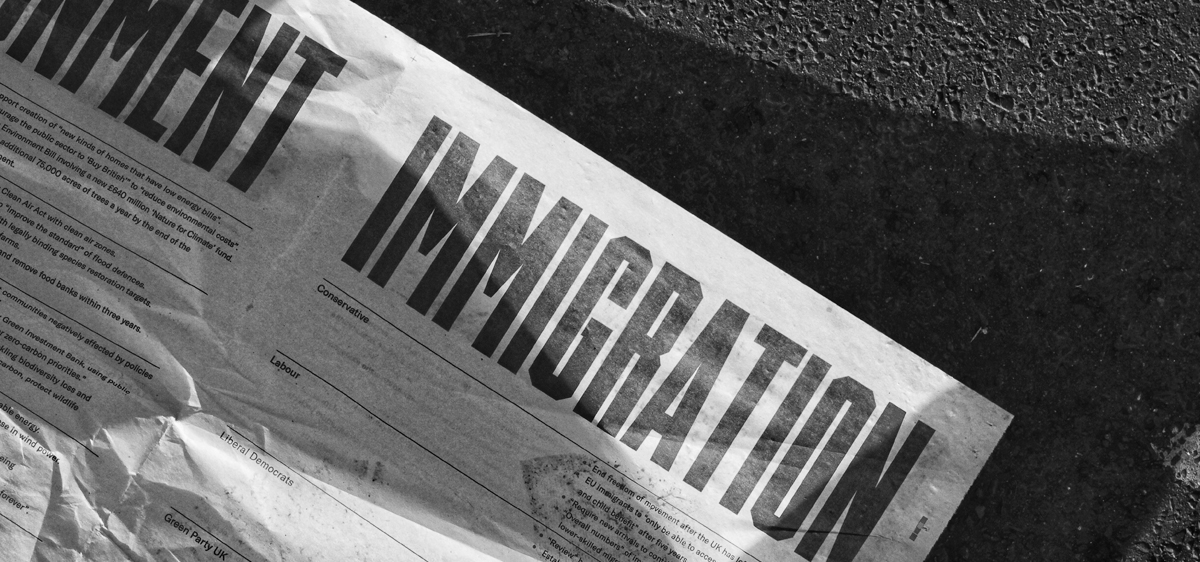
Navigating Immigration Policies
Vidhura Kumar (Undergraduate - Business Entrepreneurship), Rhea Hiredesai (Undergraduate - Computer Science), Onella Arora (Undergraduate - Bio Sci (Biomedical Sci) ), Kenneth Strong (Undergraduate - Bio Sci (Biomedical Sci) ), Ava Steckel (Undergraduate - Innovation in Society)
Whats the problem?
Immigration policy has a huge impact on international students trying to obtain work visas in the US, such as pursuing post-graduation employment. At the same time, broader discussions are occurring around immigration reform, including debates on visa regulations, employment eligibility, and pathways to citizenship. With all these dynamics at play, it's crucial to implement policy that balances national security concerns with the economic and cultural contributions of international students. Our team understood that addressing these challenges requires different approaches that prioritize both immigration control and keeping talent and merit in the US workforce.
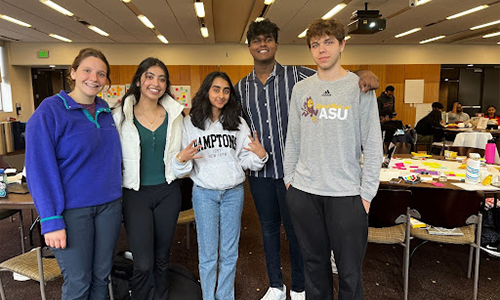
But first...

How did our team get here?
As college students, we saw firsthand how difficult it could be for our international peers to navigate the visa processes. Our conversations with them allowed us to recognize the intersection of personal experiences with systemic issues. We delved deeper into research, inspired to address immigration as a pressing societal concern -- especially for college students trying to get a job after completing their education. Ultimately our team's hope was to create a better life for everyone involved.
To understand the various stakeholders involved and their perspectives, we created an empathy map.
Empathy is especially important in addressing the social aspect of immigration because it helps counter stereotypes, reduce prejudice, and build empathy-driven solutions that prioritize well-being of immigrants. Our empathy map gave us more insight into the international college student community, and specifically tuned into how they might feel on a daily basis. Pinpointing these motivations, such as building a better life, working hard, and completing school as a way to seek financial stability helped us develop our idea. We emerged from this activiy with a desire to help international students connect with resources that would help them achieve their goals.
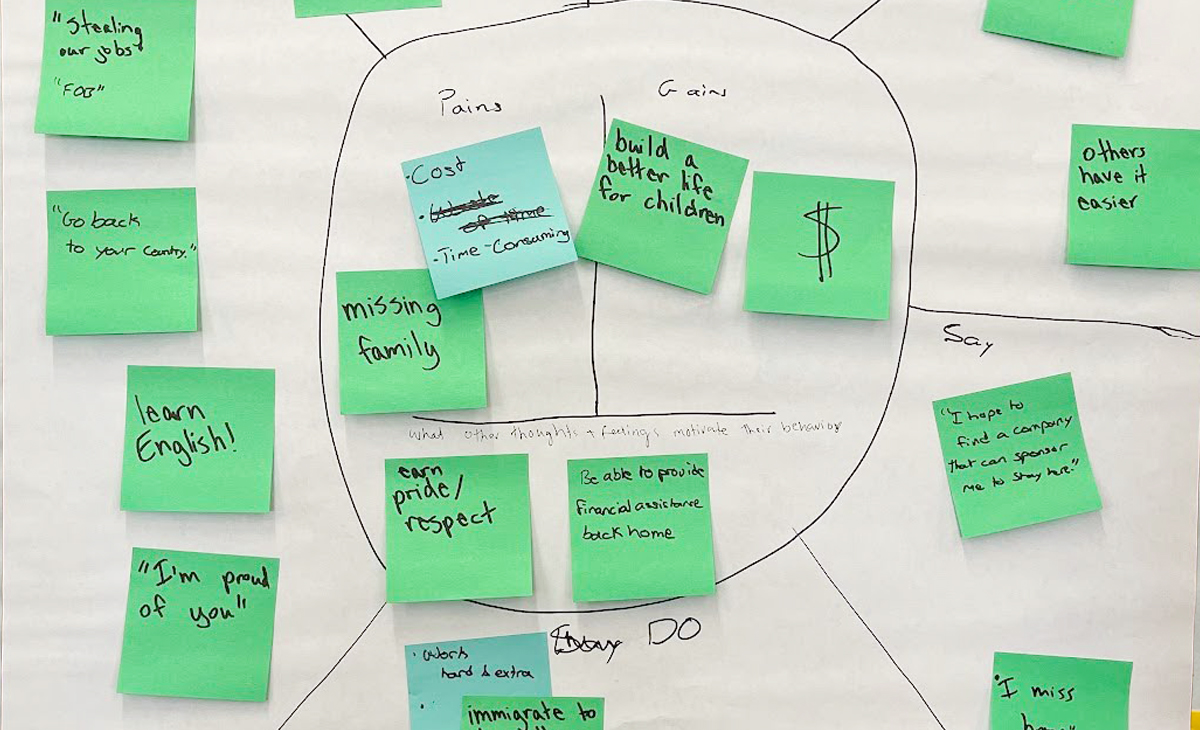
Defining the problem
for a better solution
International college students face substancial challenges when going through the visa process. Our team was especially driven to help international students make better lives for themselves, and decided we wanted to focus our efforts on establishing a mentorship program that connected them with resources. That way, we could empower these students to create their own future, allowing them to build a better reality for not only themselves but those around them, bolstering the cultural, economic, and social growth of our nation.
Storyboard
The storyboard helped us get a realistic idea on how immigrants first struggle coming into the country, and then struggle even more to achieve success on the daily. Our character Keshav goes through several stages to finally obtain a happy, successful life in the US after immigrating from India. Keshav decides to take a leap and puts all his trust in a flyer he saw on the wall, and with the help he needed to complete the tedious visa application, his documents are finally accepted. Even after this arduous process, Keshav must still work hard to settle his life in a brand new country, where he has to start all over again on multiple levels, from success in his career to fulfillment in his personal life.

The prototype
Our prototype model uses clay figurines to show a tangible solution: a brick-and-mortar mentorship program housed within a university center, assisting international students navigating the complex US visa process. This program offers various forms of support, including coaching for the citizenship test, connecting with professionals to provide work visa sponsorship, and a supportive network of fellow peers and mentors. By leveraging the experiences of those who have successfully navigated this process, we aim to empower international students to overcome obstacles and thrive in the US workforce.
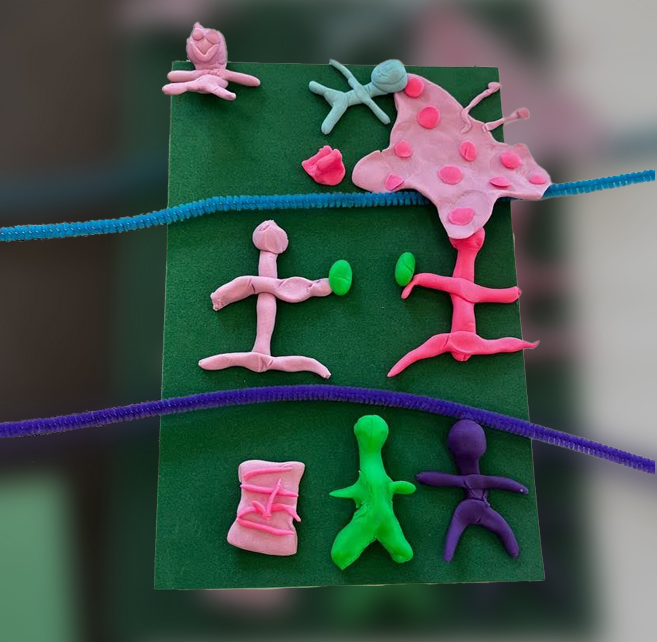
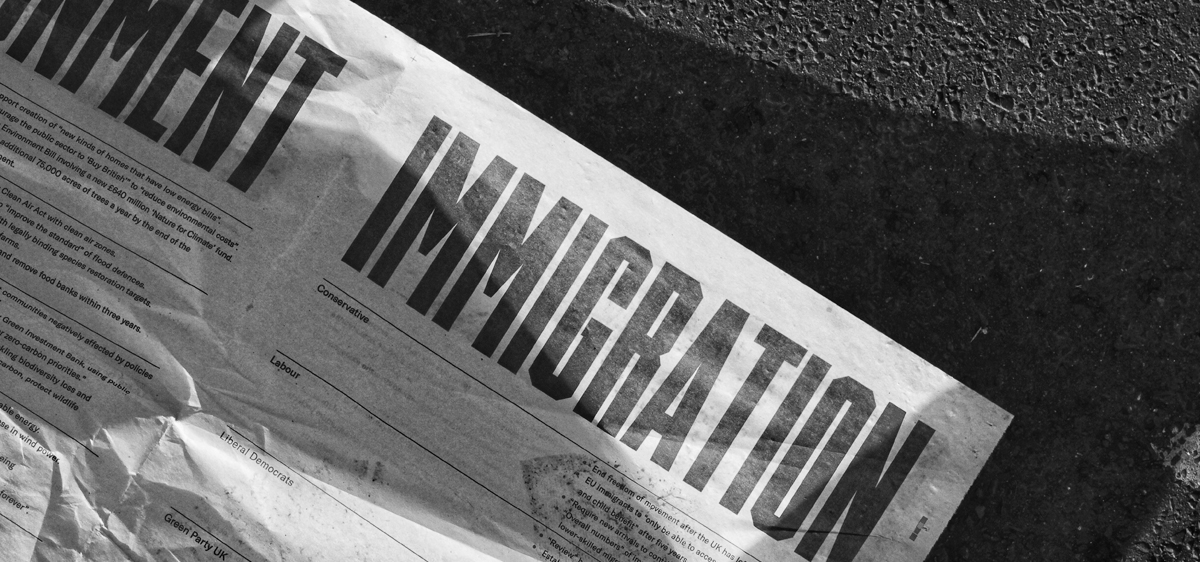
Immigration policy has a huge impact on international students trying to obtain work visas in the US, such as pursuing post-graduation employment. At the same time, broader discussions are occurring around immigration reform, including debates on visa regulations, employment eligibility, and pathways to citizenship. With all these dynamics at play, it's crucial to implement policy that balances national security concerns with the economic and cultural contributions of international students. Our team understood that addressing these challenges requires different approaches that prioritize both immigration control and keeping talent and merit in the US workforce.